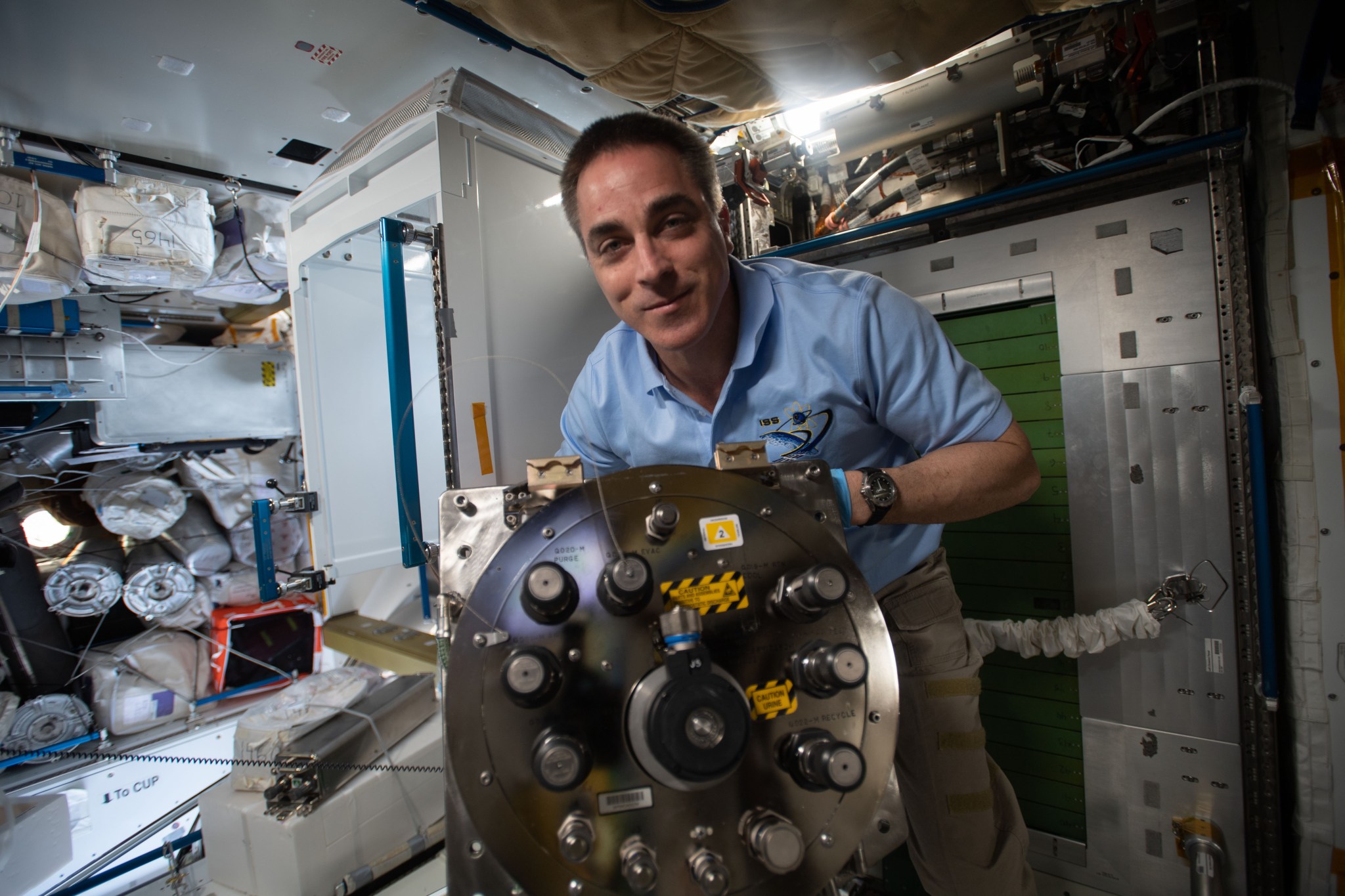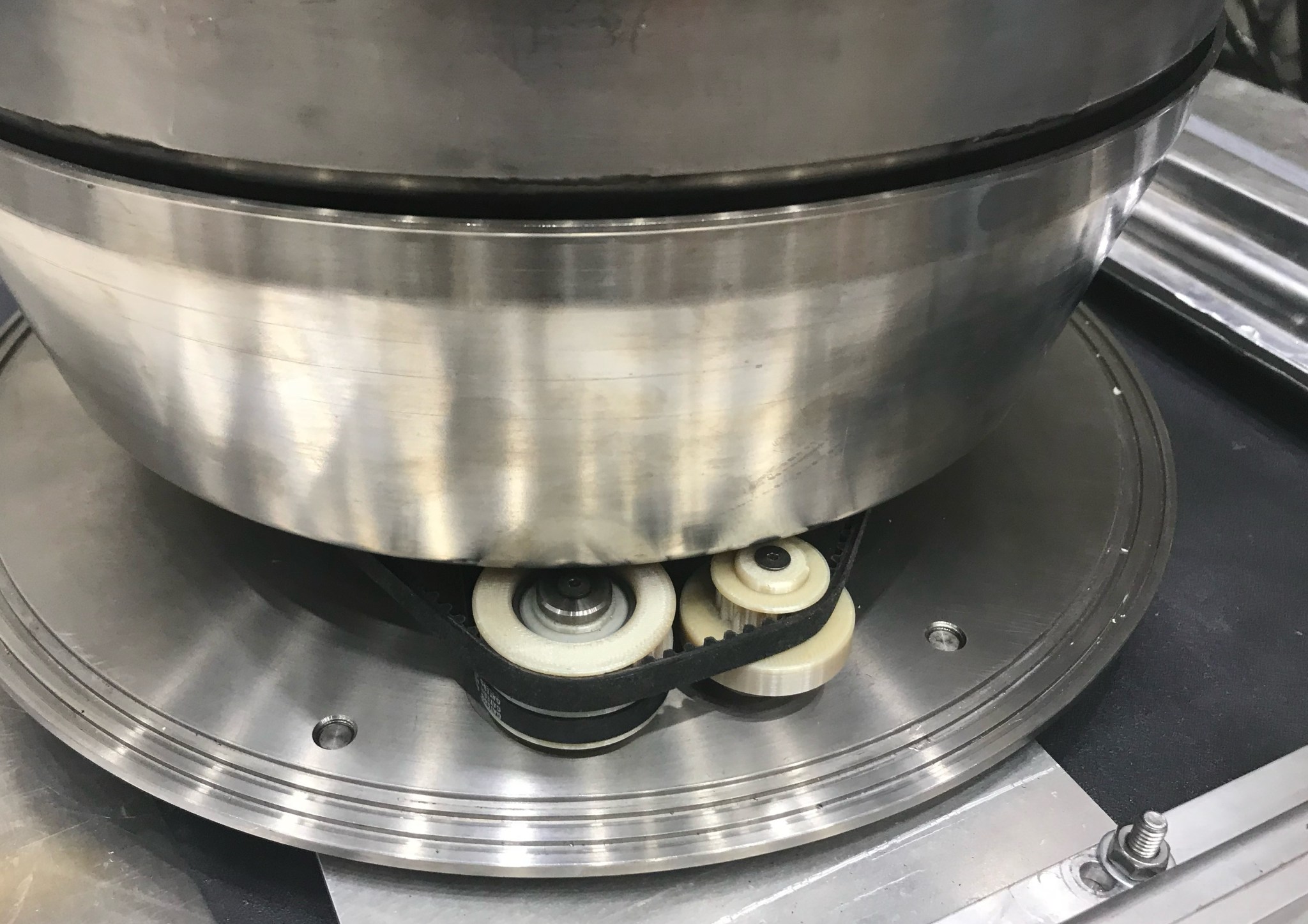Fine-tuning hardware technology to increase durability and minimize the need for replacements is a driving factor for Environmental Control and Life Support Systems (ECLSS) engineers supporting air and water recycling on the International Space Station.
“As we travel farther from Earth on Artemis missions to the Moon and build toward longer, crewed missions to Mars, it’s inevitable we’ll need more reliable hardware and a reduced requirement for spares,” said Arthur Brown, deputy manager of ECLSS integration and development at NASA’s Marshall Space Flight Center in Huntsville, Alabama. “Even from the space station, it’s a long way to the nearest hardware store or machine shop.”
Case in point: The newly upgraded distillation system for the space station’s urine processor assembly – flown to the station in March and installed in September – challenged Marshall’s ECLSS team to take a fresh look at an old problem, and apply a state-of-the-art solution.
“The distillation assembly is the heart of the Urine Processor Assembly,” Brown said. “It’s the core of the machinery that converts human urine into clean drinking water.”
Urine is boiled in the distillation assembly and delivered to the water processor, where it undergoes a cycle of filtration and chemical purification until it is usable by the crew – reducing costs associated with launching heavy water shipments to the station from Earth.
Developed for NASA in the 1990s and refined continuously ever since the space station began to house rotating crews 20 years ago, urine and wastewater recycling technologies used on the station typically do a better job cleaning, filtering, and delivering potable water than many large commercial systems employed on Earth.
But engineers found the station’s system suffered an issue common to many machines – deteriorating belts. Belt drives typically transmit motion from one internal hardware element to another, mechanically linking rotating parts to drive gears or wheels. They require tension, correct contact, and proper maintenance to function.
Even with the right upkeep, belts wear out – especially when exposed to the steam from the urine distillation assembly accelerating the process.
“Our challenge was to deliver a new design that could bypass the belt stretching issue,” Brown said. “The Urine Processor Assembly team partnered with engineers in Marshall’s Materials and Processes laboratory to explore 3D printing options to develop prototype design solutions and dramatically shorten design cycles.”
3D printing, also known as additive manufacturing, uses composite materials, built up layer by layer, to create sophisticated, durable parts and hardware. NASA is pursuing the technology to provide long-term space missions with their own 3D print-on-demand “machine shops,” enabling future exploration crews to build reliable parts and tools without waiting for weeks or months for shipments from Earth.
Marshall engineering teams determined they could 3D print a plastic-toothed drive pulley, and they delivered near-flight-quality prototypes in less than two weeks. From there, they expanded the system upgrades to include a variety of internal part redesigns, all to better mitigate the impact of the hardware’s steam and fluid environment, extend its service life, and continue to reliably provide the crew with life-sustaining potable water.
Previously, the distillation assembly could see parts failures after approximately 1,400 hours of service. With the upgrades included in the latest iteration, engineers anticipate a service life of more than 4,300 hours without parts replacement. The distillation assembly, which helps the crew recycle 90 percent of the water they need on station, is only operated for a few hours each day, so those anticipated lifetime hours can stretch into years.
“Our first goal is always to increase reliability. If hardware doesn’t break, that’s a problem solved,” Brown said. “But we’re also working to enable on-orbit maintenance by replacing component parts – from sensors to vacuum pumps – instead of taking out whole mechanisms and flying up brand new ones. In future systems, everything internal is designed to be individually replaceable by the crew.”
Building on two decades of experience and technical know-how gained at the space station, NASA’s Artemis program will land the first woman and next man on the Moon by 2024 and prepare to extend humanity’s reach farther into the solar system. To learn more about space station hardware and life support systems, visit:
https://www.nasa.gov/centers/marshall/earthorbit/hardware.html




























